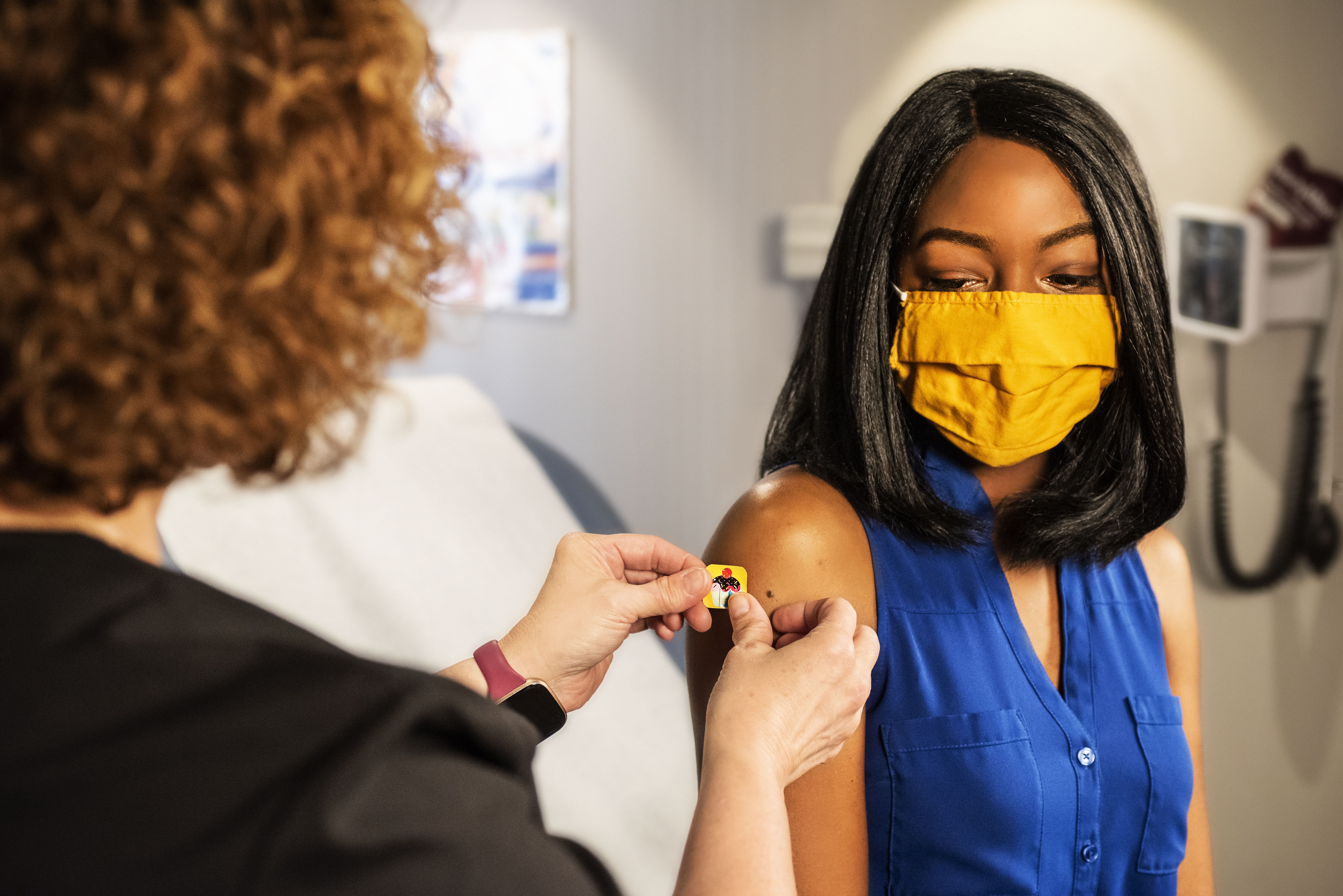Disparities in COVID-19 Vaccination Benchmarks by Race and Ethnicity
The median vaccination rate of white American adults was found to be 1.3 times higher than Black and Hispanic adults.

COVID-19 infections, hospitalizations, and deaths among Black and Hispanic populations have shown how racial and ethnic disparities persist even (or especially) in the health sphere. A study published earlier this week in JAMA Network Open endeavored to quantify how vaccination rates differed by race and ethnicity across the US.
The investigators utilized a decision analytical model, examining population distribution by age, self-reported race and ethnicity, and census tract from data provided by the American Community Survey. Through March 31, 2021, they stratified persons who had received at least one vaccine dose by age and then by self-reported race and ethnicity. The investigators reported estimates for Asian, Black, Hispanic, and white populations based upon the minimum state-level population threshold of 200000 people.
The investigators combined all data to estimate relative vaccine uptake rates by race and ethnicity for all eligible adults, defining relative uptake rates as “the observed share of vaccinations for a racial or ethnic group divided by the expected share if uptake across racial and ethnic groups within each age group were proportional to population size.” The study controlled for the interaction of age-based eligibility criteria with race and ethnicity, endeavoring to isolate the effects of differing vaccine accessibility and confidence.
The study modeled vaccine scale-up for each census tract in a state under 3 different scenarios: persistent differential uptake, equalized uptake, and equalized uptake and geographic targeting. In the persistent differential uptake scenario, the investigators used observed daily vaccination rates by state a reported to the CDC from April 1-July 1, 2021, assuming disparities in state-specific relative uptake rates by race and ethnicity would remain consistent.
In the equalized scenario, investigators assumed equal daily vaccination rates across all racial and ethnic groups within each state, setting each day as the highest rate observed for any group with a state population of at least 200000.
In the equalized uptake and geographic targeting scenario, for six weeks after April 1, 2021, investigators modeled the impact of doubling vaccination rates of the most disadvantaged quartile of census tracts, as reported by the CDC’s Social Vulnerability Index. As of July 1, 2021, investigators compared the hypothetical projections in all 3 scenarios to the actual estimated vaccination rate by race and ethnicity to measure progress toward vaccine equity.
In most US states, relative uptake rates through March 31, 2021, were significantly higher among white adults than Black and Hispanic. The median vaccination rate of white adults was 1.3 times higher than both Black and Hispanic adults. When combining the effects of disproportionate uptake and age-based eligibility, investigators estimated coverage among Black and Hispanic adults was one-third lower (29%) than among white adults (43%).
In the persistent differential uptake scenario, Hispanic and Black adults would reach 50% coverage of 1 or more vaccine doses 57 days and 26 days later, respectively, than white adults. In the equalized uptake scenario, these delays were reduced to 17 days for Hispanic adults and 30 days for Black adults.
In the equalized uptake and geographic targeting scenario, delays to 50% coverage of 1 or more vaccine doses were hypothetically reduced to 8 days for Hispanic adults and 13 days for Black adults. In this scenario, vaccine disparity between Hispanic and white adults would have been eradicated by July 1, 2021, and reduced to 76% for Black adults.
Actual estimates of vaccine coverage on July 1 were 67% for white adults, 68% for Hispanic adults, and 54% for Black adults. Actual coverage of Black adults reached the levels projected in the equalized uptake scenario in only 10 of the 30 states with sufficient data and population size, and coverage among Hispanic adults reached these benchmarks in 20 of the 27 analyzed states.
The investigators saw these results as emphasizing “the urgent need to invest in policies and interventions to promote vaccine equity. Our results additionally demonstrate the benefits of place-based targeting of efforts to promote vaccination uptake… by applying consistent rules, we reconciled heterogeneous reporting data to quantify vaccination disparities and demonstrated the need for equity-focused policies to ensure that underserved communities are not left behind.”

















